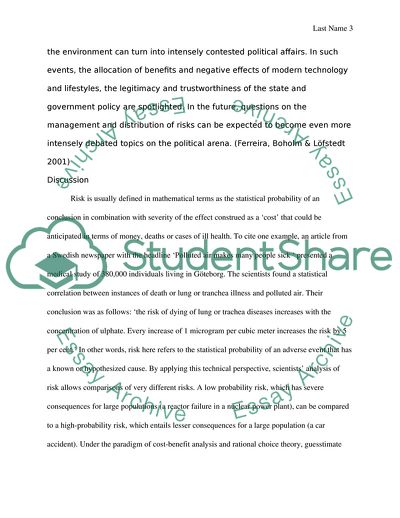Cite this document
(Societal Risk Assesment Term Paper Example | Topics and Well Written Essays - 3000 words, n.d.)
Societal Risk Assesment Term Paper Example | Topics and Well Written Essays - 3000 words. https://studentshare.org/social-science/1709719-societal-risk-assesment
Societal Risk Assesment Term Paper Example | Topics and Well Written Essays - 3000 words. https://studentshare.org/social-science/1709719-societal-risk-assesment
(Societal Risk Assesment Term Paper Example | Topics and Well Written Essays - 3000 Words)
Societal Risk Assesment Term Paper Example | Topics and Well Written Essays - 3000 Words. https://studentshare.org/social-science/1709719-societal-risk-assesment.
Societal Risk Assesment Term Paper Example | Topics and Well Written Essays - 3000 Words. https://studentshare.org/social-science/1709719-societal-risk-assesment.
“Societal Risk Assesment Term Paper Example | Topics and Well Written Essays - 3000 Words”. https://studentshare.org/social-science/1709719-societal-risk-assesment.


